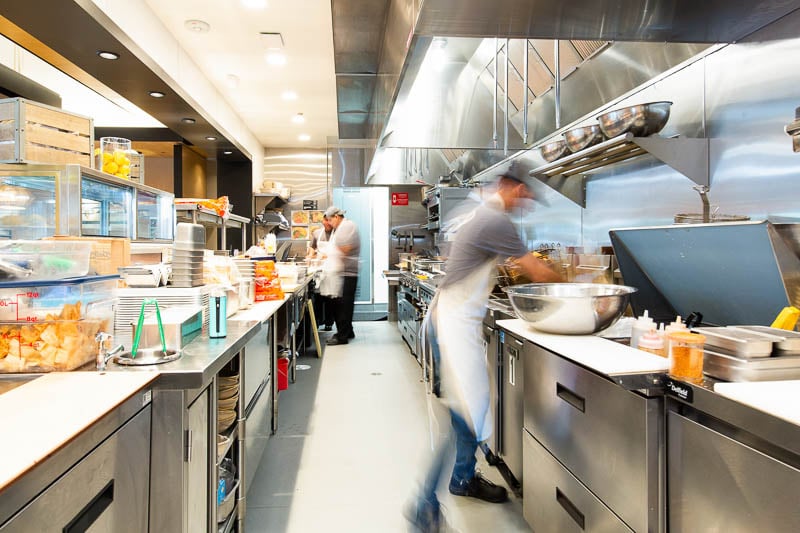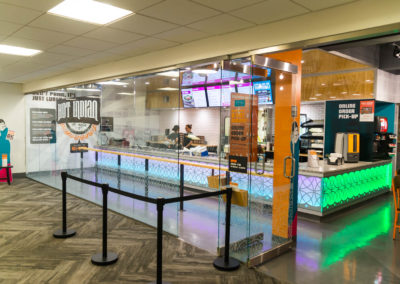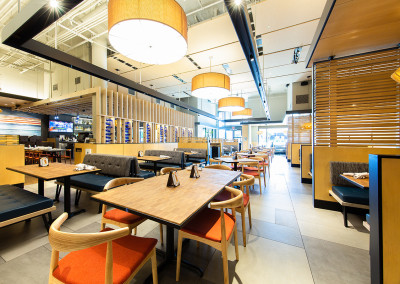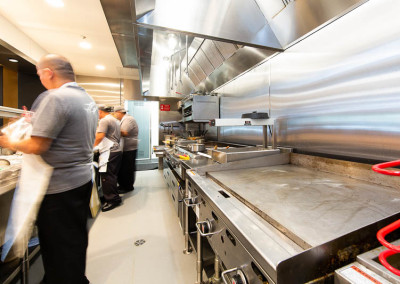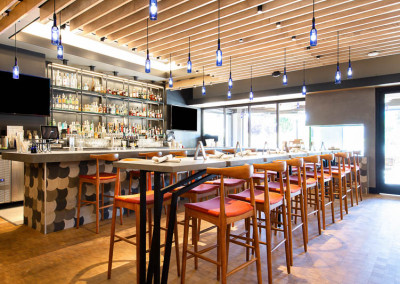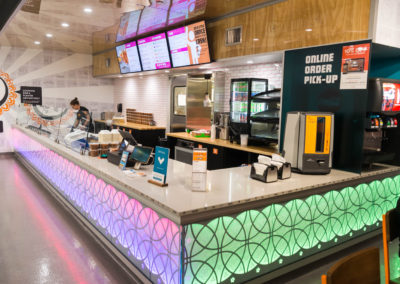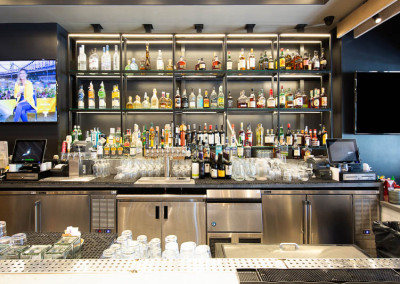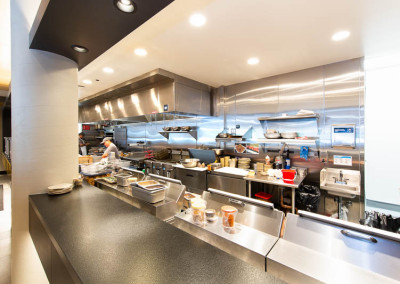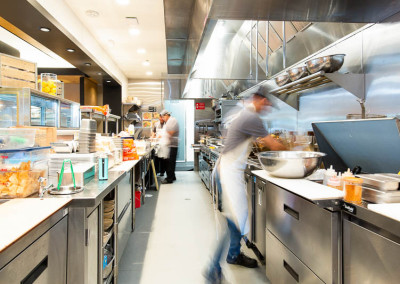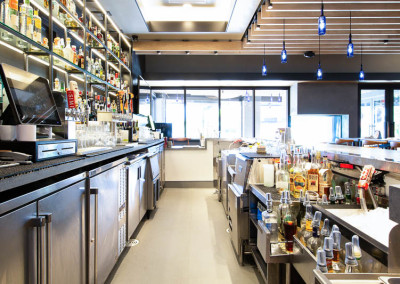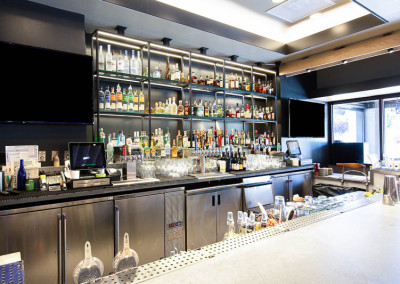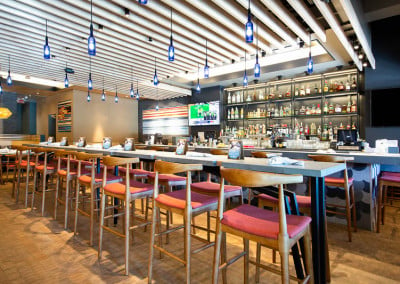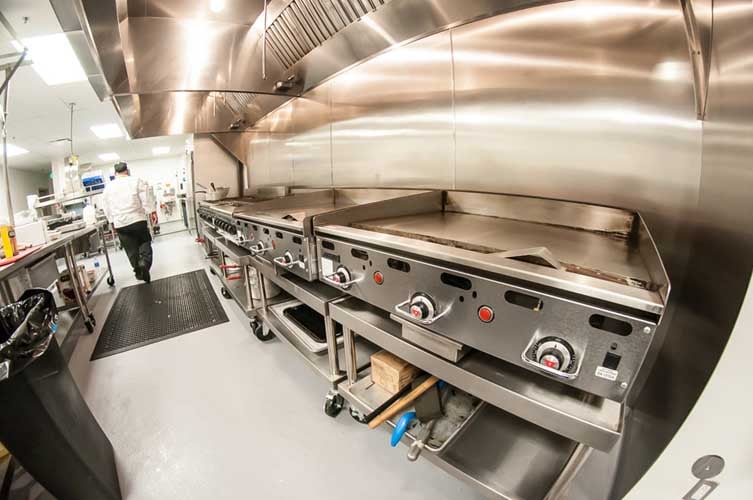Fast Food/QSR
SERVING YOUR AREA
Ready to improve or build your food service operations? Contact us to talk to one of our experts right away!
or call 800-899-6604
Building Fast Food Kitchens
Rapids Contract has been designing and building fast food kitchens for optimal efficiency throughout the history of fast food. Our team balances expertise with communication and accountability throughout the design and build process. We know how to address your establishment’s needs with a streamlined fast food kitchen created to meet QSR demands.
Why Rapids Contract Is Different
Rest assured your QSR’s uniqueness will be acknowledged during each design/planning stage.
In fast food kitchens, every second counts. Professional kitchen designers with years of experience give Rapids Contract the edge in every aspect of QSR kitchen construction. If a fast food kitchen isn’t done correctly, you could end up with safety issues, awkward workflow, and slow ticket times.
When it comes to building the fast food kitchen, few companies have as much experience interfacing with contractors, vendors, and permitting officials as Rapids Contract. Avoid construction difficulties and inconvenient—even dangerous—layouts. Choose professional fast food kitchen design and construction from Rapids.
Get Ideas From Experts in The Industry
Track Record of Success With Major Chains
Fast Food Kitchen Equipment
Rapids Contract can design your fast food kitchen or QSR kitchen to ensure you have the commercial kitchen equipment you need, where you need it. We know the ins and outs of QSR equipment, which we carefully select to meet your specific operational requirements. Get to know the foodservice equipment options at Rapids Wholesale.
Beverage and Ice Systems
Fill drink orders with quick-serve ice and soda for customers or staff. Want to add beer to the menu? We also have beer systems for fast food kitchens.
Refrigerators & Freezers
In fast food, your offerings can affect your need for a variety of refrigeration equipment. In the kitchen, commercial refrigerators and freezers meet your ingredient storage needs. Supplement the walk-in cooler with an undercounter freezer. For self service, you may want glass-door fridges or freezers for bottled beverages or frozen desserts. We have the commercial refrigeration equipment to fit any fast food kitchen or QSR.
Prep Table
Stainless steel worktables offer the basic, easy-clean prep space, while a refrigerated prep table provides ingredient storage, preparation space, and an assembly line setup. Ideal for many ingredients, refrigerated prep tables provide the maximum storage space for fast food kitchens. They offer ingredient drawers as well as cutting boards and preparation space.
Dishroom & Sanitation
When it comes to efficient dishwashing and kitchen cleanup, every restaurant or food establishment needs a well-equipped dishroom. A dishroom equipped with commercial dishwashers and sinks is the cornerstone of maintaining a smoothly running, sanitary & hygienic kitchen operation. Commercial dishwashers do the “dirty work” in the dishroom, and stainless steel sinks serve as the hub for pre-rinsing and handwashing.
Shelving
Stay organized and maximize storage options with commercial restaurant shelving. Selections include sturdy stainless shelving with or without casters.
Griddle
If you’re searing meats, flipping pancakes, or melting cheesesteaks, a commercial griddle will be necessary. Depending on your needs, we will guide you to a standalone model or a compact countertop or drop-in griddle.
Fryer
The central equipment of the fast food restaurant is the fryer. Quick and delicious proteins, fries, vegetables, and desserts all benefit from a dip in the right temperature of oil. We can provide the fryer best suited to your needs. Choose commercial gas or electric fryers, or for seamless countertop use, the best choice may be a drop-in fryer.
Ovens
Convection ovens, Combi-Ovens, Microwave, Speed ovens, and more. These culinary powerhouses elevate your cooking game to the next level, ensuring precision, consistency, and versatility for chefs and food service establishments.
Commercial Kitchen Hood
With fryers and griddles in the fast food kitchen, the commercial kitchen hood fulfills an important role in kitchen safety. This workhorse removes smoke and grease, keeping the air clear and reducing grease buildup in the kitchen. A quality kitchen hood will endure many years of service with little maintenance other than regular cleaning.
Comprehensive QSR Design Consultation Services
Effective QSR Design Consultation
Cutting corners in the initial design process can cost you in the long run. Customers expect to get their food quickly. A design that takes every step of your process (from order to final food pickup) into consideration makes delivering upon this expectation much easier.
Concept Development for Quick Service Restaurants
Make your fast food or fast casual restaurant stand out while still incorporating the elements necessary for the efficiency and ease of use customers so value.
Fast Casual Restaurant Project Coordination/Management
The professionals at Rapids have experience working with fast casual chains like Pita Pit, Zombie Burger, Panera, Mellow Mushroom, and more. This experience has provided us with a vast knowledge base from which to pull when working with equipment vendors, permitting officials, and construction contractors to ensure a smooth experience from start to finish.
CADD/Schematic Fast Food Kitchen Design for Establishments
Don’t wait to see what your QSR will look like – Rapids can provide you with drawings and a 3-D walkthrough of your future place of business!
Logo and Other Branding Consultation for Quick-Service Restaurants
When done properly, branding and graphics can really bring your design together. Work with Rapids to create a theme that you can integrate into every aspect of your business for an experience your customer will love!
Beer System Design/Consultation
Interested in incorporating beer into your setup? Rapids can help you implement and install a beer system that will complement the rest of your design!
Frequently Asked Questions for Fast Food Kitchens
How long does it take to install a fast food kitchen?
The time it takes to install a fast food kitchen can vary widely based on several factors, including the size of the kitchen, the complexity of the design, the type of equipment being installed, local regulations and permits, the availability of contractors and skilled labor, and the efficiency of the installation process.
In general, smaller and less complex kitchens in an existing foodservice space might take a few weeks to a couple of months to install, while larger and more intricate kitchens could take several months. Here are some key factors that can influence the installation timeline:
1. Design and Planning: The design phase can significantly impact the installation time. If the kitchen’s layout and design are well-prepared in advance, it can help streamline the installation process.
2. Equipment Selection and Availability: The type of equipment needed for the kitchen can affect the timeline. If specialized or custom equipment is required, it might take longer to source and install.
3. Permits and Regulations: Obtaining necessary permits and complying with local regulations can sometimes be a time-consuming process that impacts the installation timeline.
4. Construction and Infrastructure: If any modifications or construction work is required to accommodate the kitchen, such as plumbing, electrical, or ventilation systems, this can add to the installation time.
5. Skilled Labor and Contractors: Availability of skilled contractors, electricians, plumbers, and other professionals can influence how quickly the installation can be completed.
6. Project Management: Efficient project management can help keep the installation on track and avoid delays.
7. Unforeseen Issues: Unexpected challenges or issues that arise during installation, such as equipment malfunctions or structural problems, can extend the timeline.
8. Size and Complexity: Larger kitchens with more intricate setups, multiple workstations, and specialized equipment can naturally take longer to install.
9. Coordination and Scheduling: Coordinating the various tasks involved in the installation, such as equipment delivery, construction work, and inspections, requires careful scheduling.
It’s recommended to work closely with a firm like Rapids who has solutions engineers, designers, project managers, project coordinators, and support teams experienced in commercial kitchen installations. we can provide a more accurate estimate based on the specific details of your project and help manage the process to ensure it’s completed as efficiently as possible.
How much does a fast food kitchen cost?
The cost of setting up a fast food kitchen can vary widely depending on several factors, including the size of the kitchen, the type of cuisine you’ll be preparing, the quality of equipment and materials you choose, location, and local regulations. Here are some of the major cost considerations:
1. Location: The cost of commercial real estate can vary greatly based on the region, city, and neighborhood where you plan to set up your kitchen.
2. Size and Layout: The overall square footage and layout of the kitchen will impact costs. A larger kitchen will require more equipment, materials, and space planning.
3. Equipment: The cost of commercial kitchen equipment varies based on the type and brand. High-quality, specialized equipment can be more expensive. Equipment includes ovens, stoves, refrigerators, freezers, fryers, grills, ventilation systems, dishwashers, and more.
4. Ventilation and Exhaust Systems: Proper ventilation and exhaust systems are crucial for a commercial kitchen to ensure air quality and safety. These systems can be a significant cost factor.
5. Utilities and Infrastructure: Costs associated with plumbing, electrical work, and gas lines installation or modifications need to be considered.
6. Construction and Renovation: If you’re building or renovating a space to accommodate the kitchen, construction costs can vary based on the extent of the work required.
7. Permits and Regulatory Compliance: Obtaining permits and complying with health and safety regulations may incur fees.
8. Interior Design and Finishes: The quality of finishes, such as flooring, countertops, and wall coverings, can impact costs.
9. Furniture and Fixtures: If you’re setting up a restaurant or eatery within the kitchen space, the cost of furniture and fixtures for the dining area should also be considered.
10. Labor Costs: Labor costs include not only the salaries of kitchen staff but also costs for installation, construction, and any specialized services needed.
11. Contingency: It’s wise to budget for unexpected costs that may arise during the setup process.
Due to the many variables involved, it’s challenging to provide an exact figure. However, to give you a rough idea, setting up a basic small-scale commercial kitchen could start around $50,000 to $100,000. Larger, more complex kitchens with high-end equipment and finishes could cost several hundred thousand dollars or even more.
To get a more accurate estimate for your specific situation, it’s recommended to consult with our commercial kitchen design and construction professionals. We can assess your needs, provide cost breakdowns, and help you plan a budget that aligns with your goals.
What layout options are available when designing a fast food kitchen?
1. Assembly Line or Linear Layout:
This layout resembles an assembly line, with different stations for each step of the food preparation process. It’s ideal for fast food chains with a limited menu of items that can be prepared quickly. The workflow progresses in a linear fashion, from order taking to food assembly.
2. U-Shaped Layout:
A U-shaped layout places the cooking equipment and prep stations along the three sides of a U shape, with the middle left open for movement. This allows cooks to access equipment and ingredients without having to cross paths frequently.
3. L-Shaped Layout:
In an L-shaped layout, the kitchen equipment and workstations are arranged along two adjacent walls in an L configuration. This can be effective for smaller spaces and helps streamline the workflow between cooking and preparation areas.
4. Island Layout:
An island layout positions equipment and stations in the center of the kitchen, allowing cooks to access equipment from all sides. It’s suitable for larger kitchens with ample space and can provide a more flexible workflow.
5. Zoned Layout:
This layout divides the kitchen into distinct zones, each dedicated to a specific task such as cooking, preparation, dishwashing, and storage. It’s efficient for larger kitchens and helps prevent congestion by keeping different tasks separate.
6. Open Kitchen Layout:
An open kitchen layout allows customers to see the food preparation process, which can add transparency and a sense of freshness. This layout requires careful organization to maintain a clean and presentable appearance.
7. Parallel Layout:
In a parallel layout, equipment and stations are placed along two parallel lines. This is useful for kitchens with a linear workflow, where tasks progress from one end to the other.
8. Zone and Flow Layout:
This layout combines zoned areas with a logical flow of food preparation. It ensures that tasks progress smoothly and avoids unnecessary backtracking.
9. Hybrid Layout:
Depending on the specific needs of your restaurant, a combination of different layouts can be used to optimize space and workflow. For example, a U-shaped layout for cooking and an assembly line for order preparation.
Remember that the layout should be tailored to your restaurant’s unique requirements, menu items, and anticipated customer flow. It’s important to consider factors like the placement of cooking equipment, prep stations, serving areas, and storage to create a seamless and efficient kitchen environment. Consulting with Rapids’ professional kitchen designers and solutions engineers can help you make informed decisions and create a layout that maximizes productivity and safety.
Where do you get your supplies from?
Restaurant Supply Stores: These are specialized stores that offer a wide range of commercial kitchen equipment and supplies. You can find everything from cooking appliances to utensils, furniture, and cleaning supplies. Rapids currently has Restaurant Supply Store locations in St. Paul, MN and Marion, IA.
Online Retailers: There are numerous online retailers that specialize in selling foodservice equipment and supplies but clearly Rapids Wholesale’s Webstore is the best in the business!
Wholesale Distributors: Some distributors cater specifically to businesses in the food industry. They often offer bulk purchasing options and may have discounts for larger orders. Rapids Account Management Team is standing by to assist.
When sourcing foodservice equipment and supplies, consider factors like price, quality, warranty, and customer reviews. Compare options from different sources to make informed decisions that align with your budget and needs. Additionally, be aware of any local regulations or codes that might affect the type of equipment you can use in your commercial kitchen.
Looking for Ghost Kitchen Options?
To save on costs, some fast food operations start with online ordering and a ghost kitchen for cooking food quickly prior to delivery. We can evaluate your options for increasing your capacity and customer base with an efficient kitchen design. Our ghost kitchen services include equipment procurement and installation as well as project management.
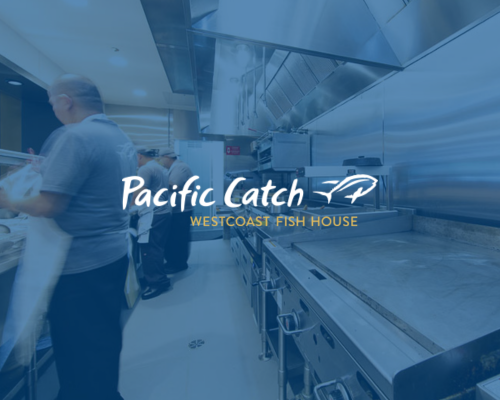
Previous Work – Pacific Catch
This project was initiated in early summer of 2017 with Pacific Catch looking to combine the benefits of several Rapids & Affiliates companies to help them realize a better complete investment in their equipment package.
We worked collaboratively to identify opportunities for improvement to the preliminary layout that improved the overall budget, operational effectiveness, and energy efficiency. Through this process, Rapids identified substantial cost reducing measures for the initial capital investment required for the package, as well as long-term operational cost reductions using more efficient equipment obtained through our Rapids Wholesale affiliate.
Previous Work – Hot Indian
Hot Indian is a fast-casual concept bringing accessible Indian food.
Rapids was involved with Hot Indian well before they decided to build out at the Skyway location at 8th Street in Minneapolis. By the time the location in the Skyway was leased, there had been 3 other iterations at different locations that didn’t pan out. This diligence on the part of Rapids and the determination on the part of the client was crucial to honing in on what equipment and design were truly necessary for the project, as Hot Indian was looking for a design and equipment that could be replicated across multiple formats.
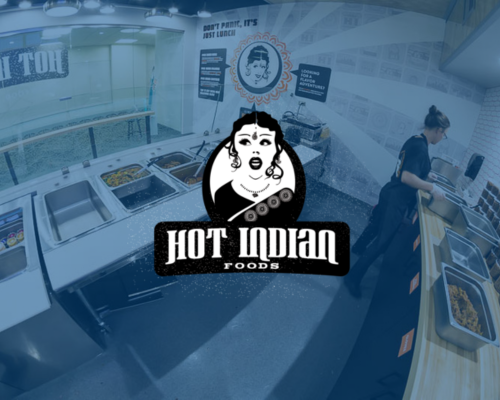
LET'S FIND YOUR SOLUTION
Rapids Contract & Design serves the United States with locations in Iowa, Minnesota, and Missouri. Our experts are ready to assist with your foodservice needs—contact us for support, Monday through Friday, 8 AM to 5 PM CST.
or call (800) 899-6604

